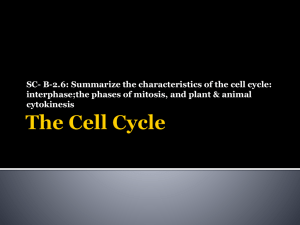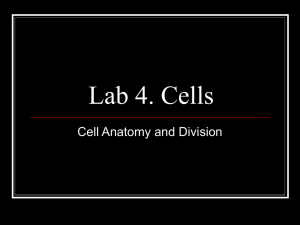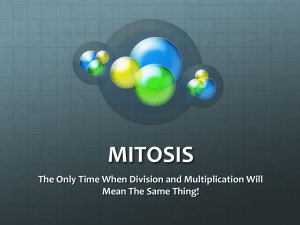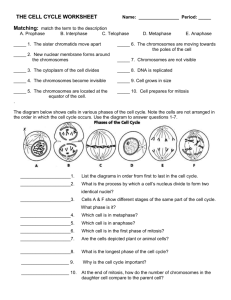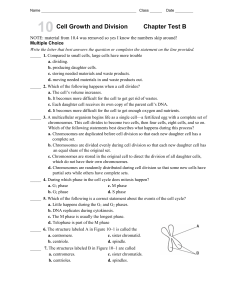The Cell Cycle
advertisement
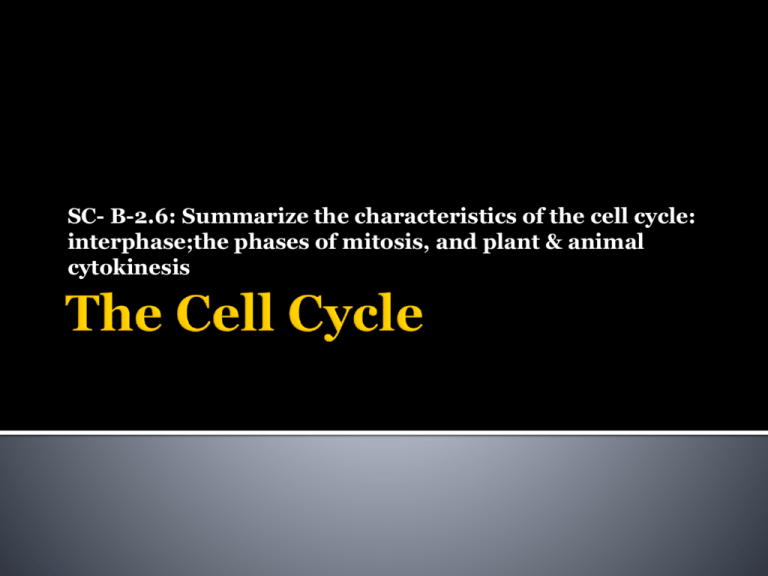
SC- B-2.6: Summarize the characteristics of the cell cycle: interphase;the phases of mitosis, and plant & animal cytokinesis in nuclei of eukaryotic cells made up of: 1. DNA 2. Histones: proteins DNA wraps around series of events that cells go through as they grow & divide What a cell does in the cell cycle: grow prepares for division divides into 2 daughter cells time between cell divisions 3 divisions: 1. Gap 1 (G1) 2. S Phase 3. Gap 2 (G2) cells do most of their growing make proteins & organelles checkpoint cells destined never to divide again leave cell cycle & enter G0 synthesis phase chromosomes duplicated cells that enter S destined to go thru mitosis usually shortest part of interphase material needed for cell division produced checkpoint 4 phases: 1. Prophase 2. Metaphase 3. Anaphase 4. Telophase each phase may last minutes to days depending on cell type longest phase of mitosis chromosomes become visible (chromatin condenses) centrioles separate & move to opposite sides of nucleus centrioles start to organize mitotic spindle nuclear envelope & nucleolus disappears chromosomes line up across center of cell = metaphase plate centromere of each chromosome connected to spindle fiber centromeres split pulling sister chromatids apart as soon as split they are called chromosomes as long as they are moving they are in anaphase chromosomes disperse & are no longer visible 2 nuclear envelopes reform & each nuclei starts to form a nucleolus spindle breaks apart cleavage furrow becomes visible cytoplasm pinches in half each daughter cell has identical set of duplicate chromosomes rigid cell wall cannot “pinch” in half Cell plate starts to form during telophase cell wall between 2 daughter cells

